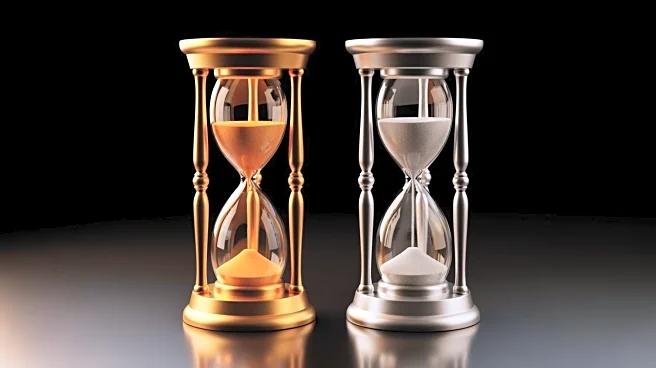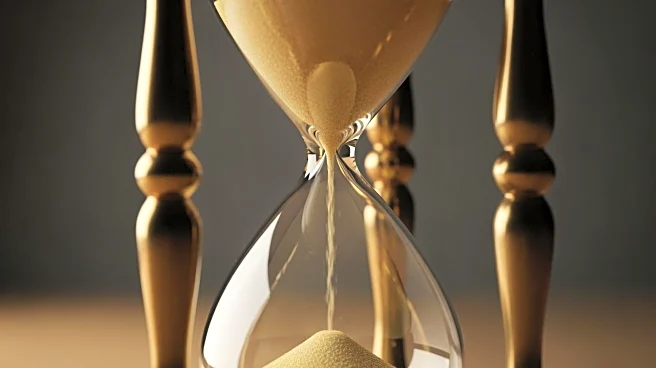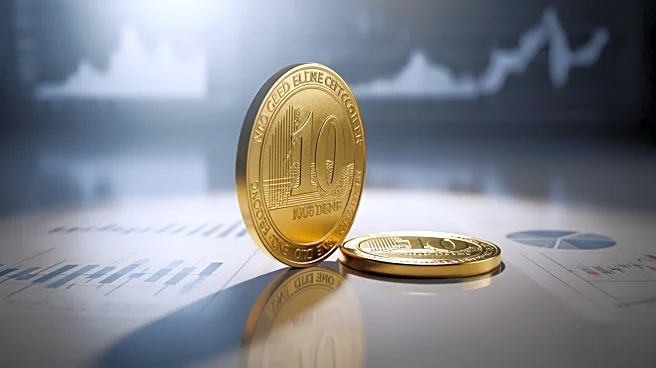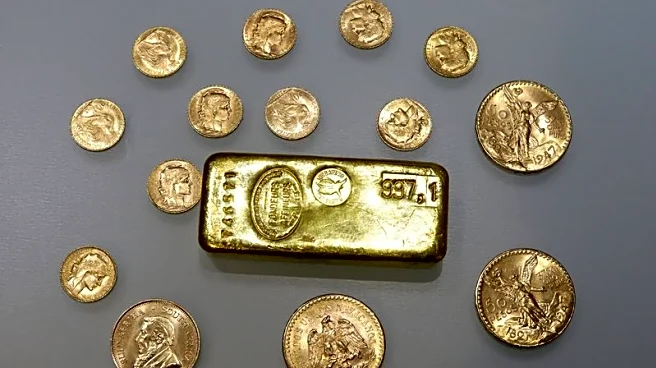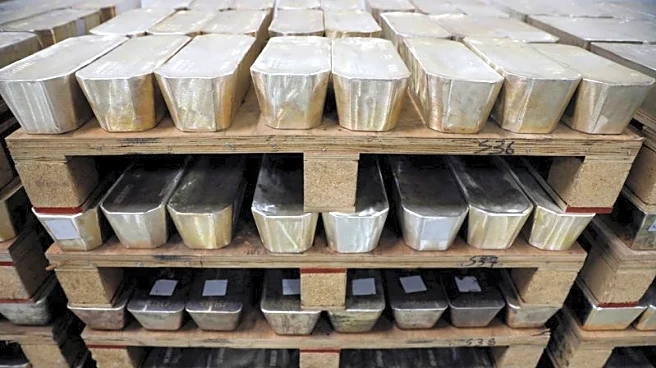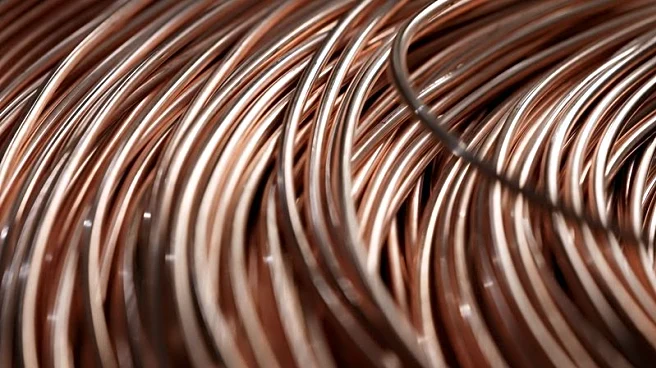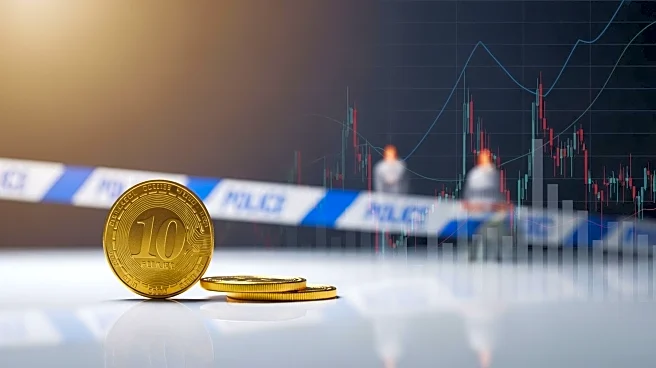What's Happening?
The precious metals market has experienced a dramatic downturn, with gold plummeting $235, representing a 5.39% decline—the steepest single-day drop since June 2013. Silver also saw a substantial retreat,
falling $3.72 (7.2%) to close at $48.66 in spot markets, marking its largest net decline since September 2011. The correction in gold prices follows an extended rally without meaningful retracement, creating conditions ripe for a sharp decline. Silver's performance, however, diverged from historical patterns, as its percentage losses were proportionally modest compared to gold's drop. This suggests underlying strength in the silver market structure, despite the overall bearish sentiment.
Why It's Important?
The divergence between gold and silver during this downturn is noteworthy, as it highlights the different market dynamics and volatility profiles of these metals. Silver's relative strength and gradual appreciation pattern suggest sustainability, contrasting with gold's parabolic price action. The valuation gap between gold and silver presents a compelling case for further silver appreciation, as silver remains substantially undervalued relative to gold. This revaluation process could attract increased attention from investors seeking value in the precious metals complex, particularly given the fundamental supply constraints facing the silver market.
Beyond the Headlines
The disparity in valuation between gold and silver may lead to a rebalancing of precious metals allocations among investors. Silver's supply situation has grown increasingly precarious, with mine production unable to satisfy surging demand. This structural deficit has resulted in physical premiums across global markets, particularly in London and India, where demand has intensified dramatically. As investors digest gold's dramatic retreat, silver's relative undervaluation and physical market tightness may attract increasing attention from both industrial users and investment capital.
